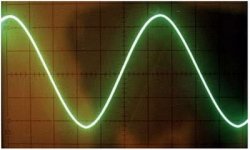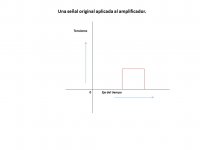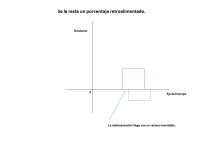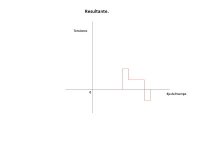Hehe, are you in the business too by any chance? Bill's post above shows that getting good sound is not rocket science and is very well understood and repeatable by the "science guys", what individuals like or don't like subjectively is beside the point, unless you are trying to market a particular product then anything goes.
............Today, CFA has been more popular, especially with internet and LTspice, I doubt those old circuits are special...[/B]
However, there is no one who, sitting in front of a computer with LTSpice proves otherwise. Some must go a long way yet .......
Informacion electronica.: Resultados de la busqueda de cita
" Feedback is late for the appointment. "
Negative voltage feedback consists of reinserting a portion of the output signal into the input, so that the aggregate portion is subtracted from the original.
Elegant mathematical formulas account for a reduction in harmonic distortion, a decrease in the hum in the circuit board, microphone noise and even a reduction in the effective internal impedance. It also reduces variations due to valve changes and even the loss of mutual conductance due to aging.
But, as in the example of the house built by 3,240 workers, sometimes these formulas are close to reality and often not.
A detailed analysis will tell us when things get better and when they get worse.
To begin with, all this analysis rests on the assumption of an amplifier that does not have a delay time between excitation and response (transit time), or that the shape of the input signal remains identical for the time necessary for the subtraction to arise. desired effect Such is the case in the laboratory, when the equipment is analyzed with sine waves.
The sine wave is a form of progressive and slightly abrupt variation; It does not have steep fronts, nor does it change in an "all or nothing" mode. When an amplifier with a fixed frequency sine wave is energized and fed back, although there is a delay in feedback, the same geometric nature of the wave causes that delay to be little noticed; It practically retains its shape.
Let's look at an image of a sine wave in an oscilloscope:
Now let's compare it with the oscillogram of a musical passage:
Little to see, right? They belong to different worlds. The music contains waves of abrupt fronts that vary widely in very short times.
What happens, then, in practice?
Let's see it in a succession of images. I deliberately drew a square or rectangular wave. It is abrupt front and, in addition, it is easy to illustrate what happens. I would not dare to obtain a drawing of the result of the previous audio signal and - even if I could - the reader would not be able to see the effect; but that is heard, is heard.
First we turn on a pair of coordinate axes a variation of voltage at the input:
The second image represents the re-injected portion so that it remains, with the delay caused by the delay of the signal in the amplifier:
Finally, we put the result of the subtraction:
Kick yourself! What luck for the misfortune! Worse remedy than disease. Can you imagine the result in the music fragment of the beginning? It doesn't give me a head.
Why does a good tube amplifier with 0.1% total harmonic distortion sound better than a transistorized amplifier with 0.01%?
Valves are elements governed by tension, so that the responses are much faster than in bipolar transistors, which depend on the transit of loads. In addition, the output transformer severely limits the feedback that can be implemented; It is rarely more than 10% of the input voltage. In contrast, solid-state equipment does not usually have an output transformer and much larger feedbacks are applied, with more significant delays.
While wonders are measured in the laboratory with sine waves, with music things change.
The ear should be a judge, but it is not always a competent judge. We are used to distorted electronic sound, we take the artificial as natural. We hear a violinist perform a piece with a microphone built into his violin. It is a sound adulterated by the amplifier, which may be good, but it is not perfect. The true sound of a concert violin is heard live and without amplification. Try attending a chamber music concert without microphones and then compare the same concert played on your stereo. Please do not throw it away; worse is nothing.
😉
Attachments
Last edited:
The electronics are completely transparent, with some exceptions.
That satire gave me a good chuckle.
dave
Bill Coltrane
" Subjective measurements with the proper protocol is the only thing that matters "
There is nothing more to talk about 😀
Fundamentalism has triumphed ...🙄
" Subjective measurements with the proper protocol is the only thing that matters "
There is nothing more to talk about 😀
Fundamentalism has triumphed ...🙄
You are right planet 10, another dogma.
If people could only set aside the 'topologies' and the dogmas, we could breathe.
There is not such thing in audio.
My criteria is simple, I am here, to be transported in time to my childhood, where sounds were fabulous, everything was a new emotion, a discovery, a miracle.
I have a small but how shockingly dynamic and real replica of the musicians in my home tonight, where I can enjoy a scotch, philosophy and reconnect with the past, with the master composers of the past.
A tip to those still looking, adjustments are paramount, changing the bias balance of 0.1mA can change the whole thing. Adjusting the azimuth, VTA and most importantly the most precise compensation which helps with THD and everything so important to a good vinyl sound.
The more brutal, unrealistic, and tasteless modern mainstream music becomes, the closer you are to a true audiophile system.
If you are looking for XO capacitor upgrades, big 10 watt resistors, 0.001% thd no fault amps, and super high resolution sources, you are going colder and colder.
I can never repeat enough that the most moving experience I ever had with audio was with a single philips alinco stereo in close range, with a cheap dvd player, some opera and a super nice 845 amp.
If people could only set aside the 'topologies' and the dogmas, we could breathe.
There is not such thing in audio.
My criteria is simple, I am here, to be transported in time to my childhood, where sounds were fabulous, everything was a new emotion, a discovery, a miracle.
I have a small but how shockingly dynamic and real replica of the musicians in my home tonight, where I can enjoy a scotch, philosophy and reconnect with the past, with the master composers of the past.
A tip to those still looking, adjustments are paramount, changing the bias balance of 0.1mA can change the whole thing. Adjusting the azimuth, VTA and most importantly the most precise compensation which helps with THD and everything so important to a good vinyl sound.
The more brutal, unrealistic, and tasteless modern mainstream music becomes, the closer you are to a true audiophile system.
If you are looking for XO capacitor upgrades, big 10 watt resistors, 0.001% thd no fault amps, and super high resolution sources, you are going colder and colder.
I can never repeat enough that the most moving experience I ever had with audio was with a single philips alinco stereo in close range, with a cheap dvd player, some opera and a super nice 845 amp.
Last edited:
Nice bit of selective quoting there to fit your sales MO, care to comment on the rest of his post?That satire gave me a good chuckle.
dave
" Feedback is late for the appointment. "
Without good Physics background tho, there is a big tendency to misunderstood 'feedback delay' and 'sinewave vs music signal'.
The world is our oyster.My criteria is simple, I am here, to be transported in time to my childhood, where sounds were fabulous, everything was a new emotion, a discovery, a miracle.
May your innocence remain with you, always.
It's amazin' that there are people out there that think they know better than all the scientists working in the field.Bill Coltrane
" Subjective measurements with the proper protocol is the only thing that matters "
There is nothing more to talk about 😀
Fundamentalism has triumphed ...🙄
Critical thinking skills, what are they.........
That satire gave me a good chuckle.
dave
Proof me wrong.
See my previous post.
Proof me wrong.
That's the wrong way around. Extraordinary claims (e.g. 'all electronics is transparent') require extraordinary evidence.
Indeed.
It's like saying I should go to Mars to prove there's no life there.
Critical thinking skills, what are they again.....
It's like saying I should go to Mars to prove there's no life there.
Critical thinking skills, what are they again.....
Again, selective quoting. Of course everything is relative. The electronics can be made near as damn it transparent, I prefer the word accurate, the fact is many people don't particularly like the sound of accurate, they like some distortion of one form or another, no problem.That's the wrong way around. Extraordinary claims (e.g. 'all electronics is transparent') require extraordinary evidence.
The surprising thing is that the dogmas remain unchanged despite the evidence against the pseudo scientific arguments .....It's amazin' that there are people out there that think they know better than all the scientists working in the field.
Critical thinking skills, what are they.........
The iconoclast task is not renumbered, but it is offset by how much fun it is to see how the answers are always the same.
- Status
- Not open for further replies.
- Home
- Member Areas
- The Lounge
- I think I've condensed in only 4 Laws the guideline for the best-in-class audio chain




